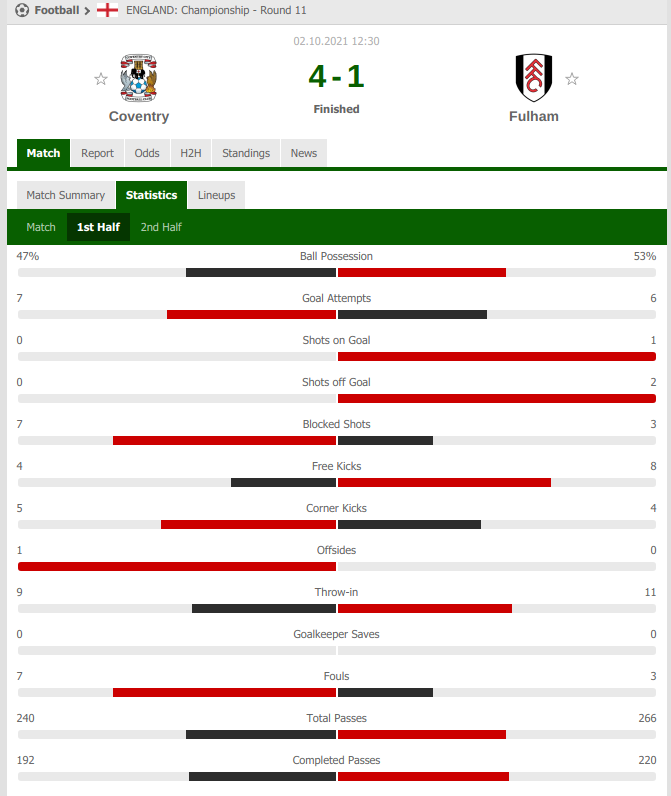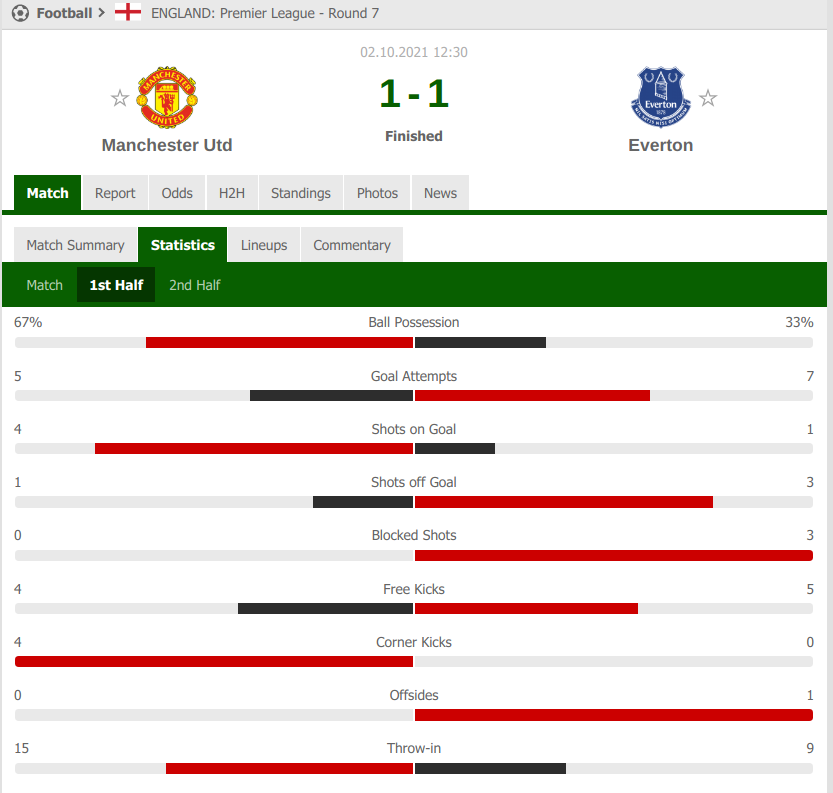Will Matched Betting allow you to make a good living / second income for the rest of your life? Well, let’s be realistic here – the answer is a resounding “No”. What does life after matched betting look like?
Like anything, stuff changes over time. Bookies aren’t in the business of giving money away. Over the last few years they have been adapting their offers. They work out how best to attract new customers and monitoring our accounts more closely. They face a battle to secure their market share and increase profits. At the same time they face competition as more new bookies arrive (and leave!) the market. They still need to encourage existing customers to bet with them and new ones to join up. Matched betting opportunities will still be available.
However, what works for you now probably won’t do in the future. That doesn’t mean you won’t be able to keep Matched Betting. You’ll just need to adapt and accept that you might not make as much profit.
What next?
Profit from Sports aims to help you find successful profitable sports betting and trading options. The first thing I’d say here is that you don’t have to wait until your Matched Betting profits stop. Start planning ahead even while your Matched Betting profits keep coming. Good Bookie Account Management is important to help you keep your bookie accounts open for the future. That is a great platform if you want to add one or more Tipsters to your betting approach.
Similarly the discipline involved in Matched Betting is a great grounding to move on to Trading on Betting Exchanges.
Betting Systems certainly aren’t for everyone. You’ll find plenty of people in the betting world willing to tell you they don’t and cannot work. Basically, a betting system is a method to select bets based on defined criteria. The selection criteria will range from something relatively simple through to systems based on many different conditions.
Let’s look at Tipsters, Trading and Betting Systems….
Tipsters
Many people subscribe to Tipster Services and in some cases, they make some decent profits from them. It can be a very easy way of making money. It can take very little of your time with just a few minutes needed each day to see what tips are available. You just need to log in to your bookie account(s) and place your bets. It can equally be a very easy way to throw money down the drain!
What is a Tipster?
Very simply, a tipster is someone who will tell you what they think will happen in a sports event. You then choose whether to take their advice and put a bet on the result in the hope they are correct.
In theory, Tipsters are more knowledgeable about a subject than the bookmaker who sets the initial odds. A tipster won’t regard their tip as a certainty. It’s a bet based on their view that the bookie’s price is too low (or high) from the true risk.
Some tipsters use statistical based estimations about the outcome of a match/race etc. They compare this estimation with the bookie’s odds.
The tipster is said to identify ‘value’ if there’s a gap between the estimated odds and the bookmaker’s odds. Someone betting on those odds when they perceive a “gap in the book” is said to be a “value bettor”.
Why do they do it?
Most tipster services require you to sign up and pay them for their advices. They do it because they make money from your subscription (typically monthly). Potentially they don’t even put a bet on their own selections!
What Sports do Tipsters cover?
There are tipsters providing their services across all types of sports. They typically specialise in one area like horse racing, football (soccer!!), tennis, greyhound racing, American football (and other US sports), darts, golf.
Why should I follow a tipster?
Finding and following a good tipster can be a relatively easy, low effort and enjoyable way to make profits from sports betting. I have a couple of tipsters which I follow and whose service works well for me.
I don’t have lots of time to spend placing dozens of bets each day. So the services I use only involve 5-10 minutes of my day to place my bets.
Several factors affect whether a tipster is right for you (see How I Evaluate a Tipster). Whether they might be profitable for you will vary compared to other people. For example, there are limits on the stakes I can place on most of my bookie accounts (or they’re closed). I have very limited access to Best Odds Guaranteed (BOG) for my horse racing bets. There’s not much point me following a horse racing tipster who has proven themselves to make profits but only when shopping across multiple bookies and using BOG.
However, plenty of tipsters (the majority) don’t return a profit for their followers. So, how do you go about finding the decent tipsters?
How do I find a good Tipster?
There are many disreputable tipsters out there and plenty who are just not very good. Do a search for ‘best tipsters uk’ and you’ll be inundated with results. If you then click through to some of them you may soon be seduced by their claims. They might claim access to inside information, massive £s and ‘points’ profit, life changing amounts of profit to be made etc. How I Evaluate a Tipster shows the approach I take to check a tipster and Tipsters that have Passed my tests are HERE
Betting Systems
Betting Systems certainly aren’t for everyone. You’ll find plenty of people in the betting world willing to tell you they don’t and cannot work. Basically, a betting system is a method to select bets based on defined criteria. The selection criteria will range from something relatively simple through to systems based on many different conditions.
For example, a roulette system might be to back one colour (Black or Red) when it hasn’t come up for say 3 spins in a row. The system basis is that colour should be due to come up (I’m definitely not suggesting you follow this though!).
A horse racing system might be to back horses trained by a particular trainer only when they travel more than 200 miles to a race. It might be refined by betting only when the price above a certain amount . The theory being there’s a good reason to travel all that way….
Anyone can make a system up. A system needs to be fully back tested and based on some logic to have any chance of making profits.
Past performance is no guarantee of future profits!
You find that ‘holy grail’ system which made money based on your backtesting. The fact you’ve proved it would have made profit in the past won’t guarantee it will continue to do so going forwards. It can be tempting to dive in with a relatively large ‘real money’ stakes. However, you really should paper trade until you are comfortable to commit to live bets and then continue tracking results.
If you have a good understanding of a particular sport and a mathematical and logical mind you might get there. You might create a profitable system even if you do ‘kiss plenty of frogs’ along the way.
There are many different sources of data to use when creating and analysing systems. I find systems fascinating. I’ve certainly spent more time than I should looking into potentially profitable system-based betting angles. My system analysis has certainly helped me develop trading angles….
Example Quick System
As I write this, Coventry are playing Fulham in the English Championship. Fulham take the lead in the first half. Shortly afterwards the TV coverage flashes up a statistic saying that Coventry are the joint best side in the league at gaining points after falling behind in their games. It’s been a fairly even game with both teams having had their chances.
The 1st half stats on Flashscore below show that both teams have had a similar number of goal attempts and attacks. By half-time the win price for Coventry is nearly 14.0 on Betfair. A Coventry win seems very unlikely. However, the stats suggest they are a team that don’t give up, maybe half-time will give their manager a chance to change things.

You can guess the rest as Coventry come back to win 4-1 so the price of 14.0 looked a steal!
Quick System continued?
Funnily enough, at the same time as Coventry vs Fulham there’s a Premier League match between Man Utd and Everton. At half-time it’s no surprise that Man Utd are 1-0 up. However, what if you check the Premier League ‘Points Gained after Falling Behind’ table? Everton were joint top having been behind in 3 games and they had gone on to win 2 of those games. The Flashscore 1st half stats for the game show that Man Utd have had most of the possession. But Everton have had more goal attempts so are clearly not out of the game.

You’ll see that the final score was 1-1 after Everton scored in the 65th minute. A win bet on Everton at half-time would have lost if placed as a straight bet. I didn’t spot their win price on Betfair at half-time but I’d guess it would have been upwards of 20.0. Once they equalised with 25 minutes left their win price would have dropped enough to enable an easy winning trade. Alternatively a lay bet of Man Utd at half-time would have been profitable. So would backing the draw or a bet on Everton to win the 2nd half.
Now, I’m not saying you should simply back Coventry and Everton every time they go behind in a match. Knowledge is key. Maybe there’s the beginnings of a system here on teams with a history of coming from behind combined with in-play statistics…
You can find a list of football stats websites at Football Statistics
Systems aren’t for everyone and realistically are pretty niche. More details are in the ‘Systems’ area.
What’s the difference between Betting and Trading?
To me, betting means placing a bet, typically before an event starts, and then see whether it wins or loses. With betting there are only 2 possible outcomes (bar some exceptions such as Asian Handicap betting). You must be prepared to lose your full stake if your bet loses. You bet because you believe your selection will win. The key decision before placing the bet is whether the back price represents value.
With Trading you will likely react to changes in market prices and/or in play events before getting into a trade. Trading is about getting timing right and doing as much as possible to mitigate your risks. Traders are looking for profit opportunities based on price movements. They may not have a view about (or indeed care) who will win the race, match, frame, bout etc.
A good trader will have an entry and exit point for their trade. There will be two exit points. The first determines when to close the trade and secure a profit when things work out how they expected. Second, if the trade goes the wrong way there should be an exit point to close the trade and get out with a loss but with a reduced liability.
Lines are easily blurred between Betting and Trading. With the relatively recent introduction of cashout options by bookmakers many punters do now have the option to manage their risk and fix their returns before events finish. However, the prices offered by the bookies which are behind their cashout options are rarely good value. This is especially true when compared to the equivalent odds available to an exchange trader.
Sports Trading
The Basics
Sports Trading means placing trades on the Betting Exchanges and primarily on Betfair. Your Matched Betting experience means you’ll be familiar with placing a bet at a bookie and then laying it off via Betfair, Betdaq, Smarkets or Matchbook. Trading is doing the same, but both your back and lay bets are with the same exchange.
By comparison, Betting is typically placing a back bet on one or more possible outcomes in an event. Say you might decide to back a football team to win or draw. You are taking a position on a particular result. The upside is that if you are right you collect all the winnings based on your stake and the price you backed at. The downside is you stand to lose all your stake if you are wrong.
When you Trade, you are looking to make a profit regardless of the result of the event. In fact, you might not even care or check what the result is having completed your trade.
Trading is typically based on placing your back bets and lay bets on the same Betting Exchange – maybe you back a horse at 8.0 for £50 so if it wins you make £350 and if it loses then you’re £50 down. That’s a traditional bet BUT you’re trading so need to balance the books. You probably won’t have a view whether the horse will win but will look to lay the same horse on the same exchange for say 7.0. Your lay stake is calculated as your total potential return from the Back bet divided by the Price you are Laying at. So in this example your Lay stake will be £57.14 ( £50 x 8.0 / 7.0) and regardless of the result you’ll make £7.14 less commission (£7.00 at 2% comm).
Not a fortune but the £7 return is 14% of your initial £50 Back stake. Experienced traders will be using higher stakes and making considerably more!
The trading principle is to rinse and repeat subject to whatever method you want to adopt. When bets are placed just on exchanges you won’t have to worry about bookie accounts being closed. You will typically place your Back and Lay bets at the same exchange you can see exactly how much you stand to win (or lose) from your trade. The betting exchanges make their money from commission charged on the profits people make so they welcome active users and have no problem with some of their customers making large profits.
But Betting Exchanges seem really Complicated….
Anyone familiar with Matched Betting will be used to placing bets on betting exchanges like Betfair, Betdaq, Smarkets or Matchbook. You should be comfortable with the way they work even if you haven’t spent much time navigating through the markets & screens and checking out features like the price graphs, more obscure betting markets etc.
On the other hand, if you haven’t seen a betting exchange before it can appear quite daunting and complicated. Don’t worry, the basic principles are quite simple, and you can find out more at ‘What are Betting Exchanges‘.
Do I have to Sit in front of a Screen all day?
Does trading mean I need to be monitoring loads of different markets and watching for price changes on my PC screen all day? That was what I thought when I first started getting into trading but I soon found out that is definitely not the case.
For most traders, it doesn’t involve sitting and watching prices move for hours and hours.
The best traders organise their time, they plan ahead and decide which matches or races they might trade and then know what the triggers are for them to carry out their trade(s).
Successful trading is about Quality not Quantity and learning to only enter a trade when all the triggers align so they have the best probability that their trade will be successful.
Depending on the trading strategy you adopt, you may simply need to set up your bets before the match/race starts and leave them without needing to be at your PC or on your mobile while the action happens. Ideal if like most people you have a job which stops you getting much time during the day.
Automate Your Trading
This Set and Forget approach works particularly well if you use Trading Software such as Fairbot. You can create automated routines based on your trading strategy. For example, a simple Tennis Trade might be to lay a player at an in-play price lower than their pre match price (i.e. after they’ve started the match well). If your lay bet is matched in-play, the software will trigger a back bet at higher odds.
You can’t do that on the Betfair website unless you are monitoring the match but it’s easy with Trading Software like Fairbot. The software enables you to automate a wide range of trading strategies and can place bets based on all sort of criteria such as current scores, in-running odds etc.
Let’s say you have a strategy based on football matches where the stats suggest there will be plenty of goals. You might be trading the Over 2.5 Goals market and find on a particular day there are 20 matches which qualify as potential trades. Betfair cover football leagues across the globe, chances are your matches will be played throughout most of the day.
As a trader you need the discipline to set yourself a trading window, say between 7 and 9pm and then filter your 20 qualifying games into those which you have time to trade. Don’t forget though that depending on each trading strategy you may be able to automate your trading using Trading Software
Trading doesn’t have to be complicated. However, you must be able to focus on it and not trade when you’re distracted. There will always be plenty of trading opportunities so make sure you’re trading at times that work for you.
How Do I Find a Profitable Strategy?
The principle of Trading is straightforward – lay at lower odds than your back bet odds. The skill, trick, key, magic is to work out when you can make that happen.
Profitable trading requires discipline (as does Matched Betting). However, discipline on its own won’t help you create a profitable trading strategy.
There are several Trading Services which can help you with your trading. They provide details of different trading strategies across sports like football, tennis and horse racing. However, you don’t need to sign up to a service to get plenty of trading advice and example strategies.
The internet is awash with free content though the quality will vary. You have to ask yourself why anyone would give away a truly profitable strategy. However, a bit of searching will find some useful information to develop your trading knowledge.
Types of Trading Strategy?
Do you have an interest in a particular sport and feel that could give you an edge over others? If so, trying thinking about angles where you might spot trading opportunities. Examples might be: –
- are you a keen follower of certain football leagues/teams? Do you follow team news when it’s announced? If a team’s top striker is out of the team will their odds drift pre match allowing a Lay to Back trade?
- maybe you know that your team seem to start games very slowly. They are rarely ahead at half-time but they have a history of really strong second halves. So you wait until they are 1-0 down at half time to a supposedly poorer team. You then Back your team in the expectation that they’ll get a goal back. If they do, you might decide to trade out or at least remove any liability for a free bet on them winning.
- teams playing each other where the stats show goals are usually scored later in the game? Their average number of goals in the first half is low but second half goals are higher than average. One option might be to lay the total number of goals pre match (Over 2.5 Goals). You trade out during the first half when (hopefully) no goals have been scored. You lock in profit by backing at a higher price. Alternatively, you might decide to wait and see how the match unfolds before potentially getting into a trade. There are various ways of tracking how much each team has been attacking (see In-Play statistics). You’ll be looking at stats like how many shots there have been on and off each goal. How many corners have their been, how many dangerous attacks etc? If it seems a goal is coming then you could Back one of the Overs markets (Over 1.5, Over 2.5 goals etc). Aim to trade-out with a Lay bet at a lower price if a goal is scored before the match finishes.
- do you have a knack for watching horse races and spotting promising horses? They not seem in the running but like to come from the back of the field towards the end of the race? These type of runners might be ripe for backing in-running. Their price may drift as they spend their time out the back of the field. The trade is to back them when their price has drifted. Then lay them at a lower price hoping they start moving towards the front. In-play horse racing betting is pretty ruthless – can you hone your skills and profit from Back to Lay bets.
- the obvious alternative in-running is spotting horses typically put near the front in the early stages of the race. Their price may shorten in-running. Open the trade by backing them before the race starts. You then place a lay bet at a lower price for in-running or simply laying them in-running
The great thing about trading is that you aren’t looking for a winner or loser – you are looking for price movements.
Tennis Trading?
There are many different tennis trading strategies. How about a tennis match where each player’s service is broken several times in the First Set? You might be able to profit from trades without checking who won the First Set let alone the Match.
How would you know to trade that match I hear you ask? There are sites where you can access and compare statistics about each tennis player. You can check whether they both have low Service Hold percentages compared to the average. Stats like these are great in the Women’s ATP Tour where service games are broken more often than on the Men’s tour.
Tennis trading demonstrates how there are so many angles to trading – knowledge is key. There are trading opportunities when players appear to be weak or strong mentally. Do they often win tie breaks? Is one of the players a determined fighter who often wins the second set after losing the first? Are they more likely to give up once a set down? There are various tennis trading strategies like ‘Lay the First Set Winner’, ‘Back the Server’, ‘Lay the Leader’.
Summary
Hopefully this gives you a flavour and sets you thinking about trading angles from sports you might interested in. Trading doesn’t have to just be on sports and large sums are traded on politics and entertainment shows like Strictly Come Dancing, Eurovision Song Contest etc.
You can find more details in the Trading Menu. This covers Trading Software and Trading Services which provide you with a selection of different trading strategies. Some Trading Services have bespoke software to help you identify the best matches and events to trade using their strategies. All you need to do is Trade and you might even be able to automate that using Trading Software. Services like Goal Profits also provide live notifications to your mobile with potential trades to place.









